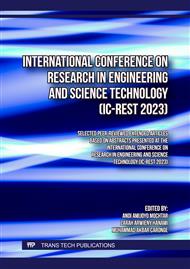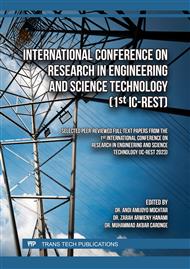[1]
Rusmana, E., Sukido, Sukarna, D., Haryono, E., and Simandjuntak, T.O. (1993) Geological Map of the Lasusua-Kendari Sheet, Sulawesi, Scale 1:250 000 (Quadrangles 2112-2212). Geological Research and Development Centre, Bandung.
Google Scholar
[2]
Kadarusman, A,, Miyashita, S., Maruyama, S., Parkinson, C.D., and Ishikawa, A. (2004) Petrology, Geochemistry and Paleogeographic Reconstruction of the East Sulawesi Ophiolite, Indonesia. J. Tectonophysics, 392(1-4): 55–83
DOI: 10.1016/j.tecto.2004.04.008
Google Scholar
[3]
Dowling, S.E. and Hill, R.E.T. (1998) Komatiite-hosted sulphide deposits, Australia. AGSO J. of Australian & Geophysics, 17(4): 121-127.
Google Scholar
[4]
Eliopoulos, D.G., Economou-Eliopoulos, M., Apostolikas, A. and Golightly, J.P. (2012) Geochemical features of nickel-laterite deposits from the Balkan Peninsula and Gordes, Turkey: The genetic and environmental significance of arsenic. Ore Geology Reviews, 48: 413-427
DOI: 10.1016/j.oregeorev.2012.05.008
Google Scholar
[5]
Silva, D. and Deutsch, C. (2019) Multivariate Categorical Modeling with Hierarchical Truncated Pluri- Gaussian Simulation. Mathematical Geosciences, 51(4): 527-552. http://dx.doi.org/10.1007/s11004-018- 09782-5
DOI: 10.1007/s11004-018-09782-5
Google Scholar
[6]
Acosta, J.A., Faz, A., Martínez-Martínez, S., Zornoza, R., Carmona, D.M. and Kabas, S. (2011) Multivariate statistical and GIS-based approach to evaluate heavy metals behavior in mine sites for future reclamation. J. Geochemical Exploration 109(1-3): 8-17
DOI: 10.1016/j.gexplo.2011.01.004
Google Scholar
[7]
Tonggiroh, A., Jaya, A., Irfan, U.R. (2017) Type of Nickel Lateritization, Lasolo Fracture and Molasse Deposits of Southeast Sulawesi, Indonesia. Ecology Environment and Conservation, 23(1):97-103.
Google Scholar
[8]
Maier, W.D., Smithies, R.H., Spaggiari, C.V., Barnes, S.J., Kirkland, C.L., Yang, S., Lahaye, Y., Kiddie, O., MacRae, C. (2016) Petrogenesis and Ni–Cu sulphide potential of mafic–ultramafic rocks in the Mesoproterozoic Fraser Zone within the Albany–Fraser Orogen, Western Australia. Precambrian Research, 281:27-46
DOI: 10.1016/j.precamres.2016.05.004
Google Scholar
[9]
Putzolu, F., Balassone, G., Boni, M., Maczurad, M., Mondillo, N., Najorka, J., Pirajno, F. (2018) Mineralogical association and Ni-Co deportment in the Wingellina oxide-type laterite deposit (Western Australia), Ore Geology Reviews, 97: 21-34
DOI: 10.1016/j.oregeorev.2018.05.005
Google Scholar



